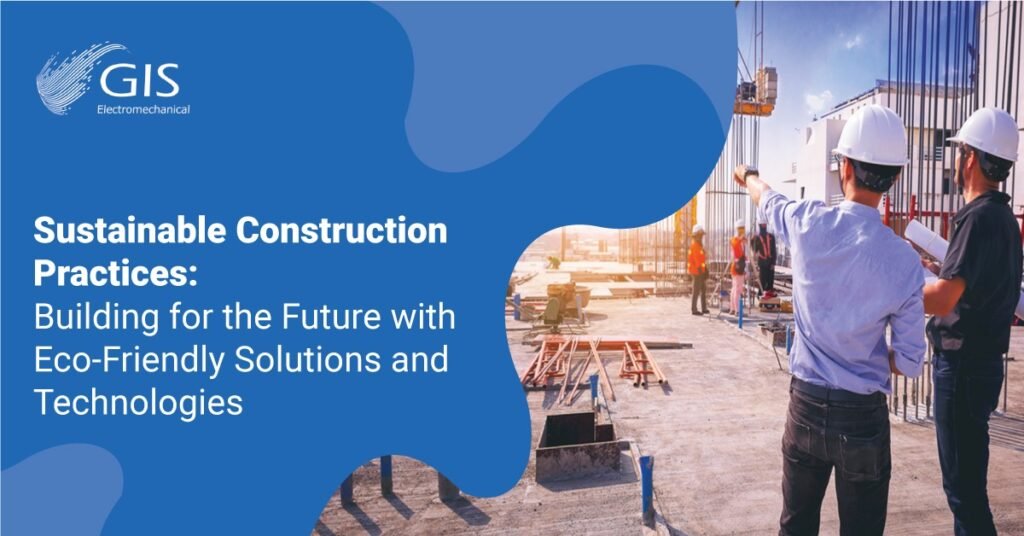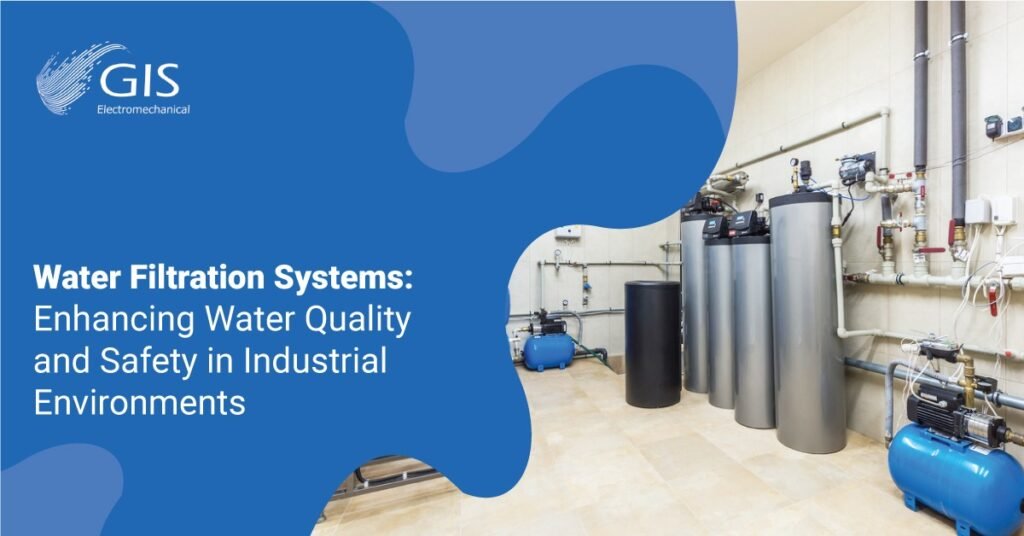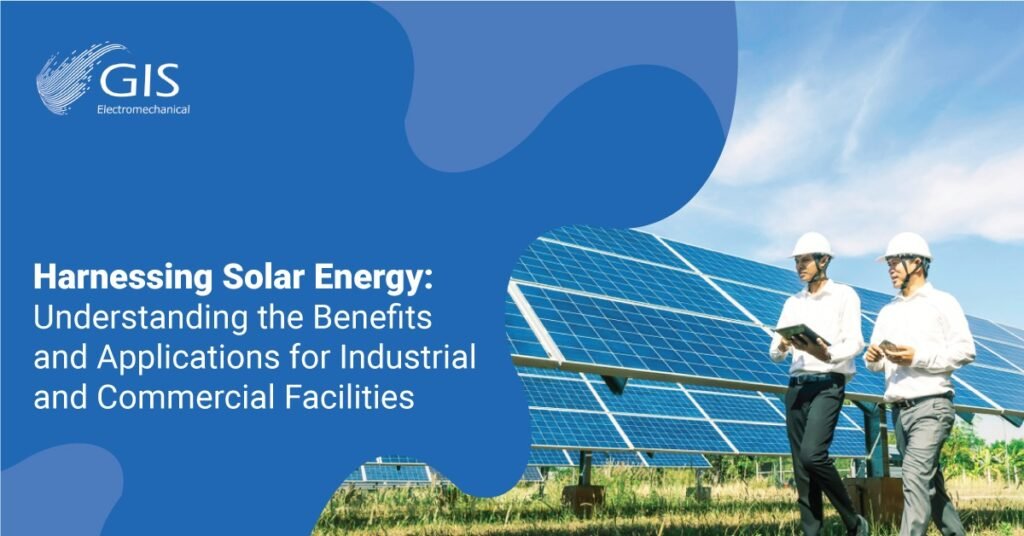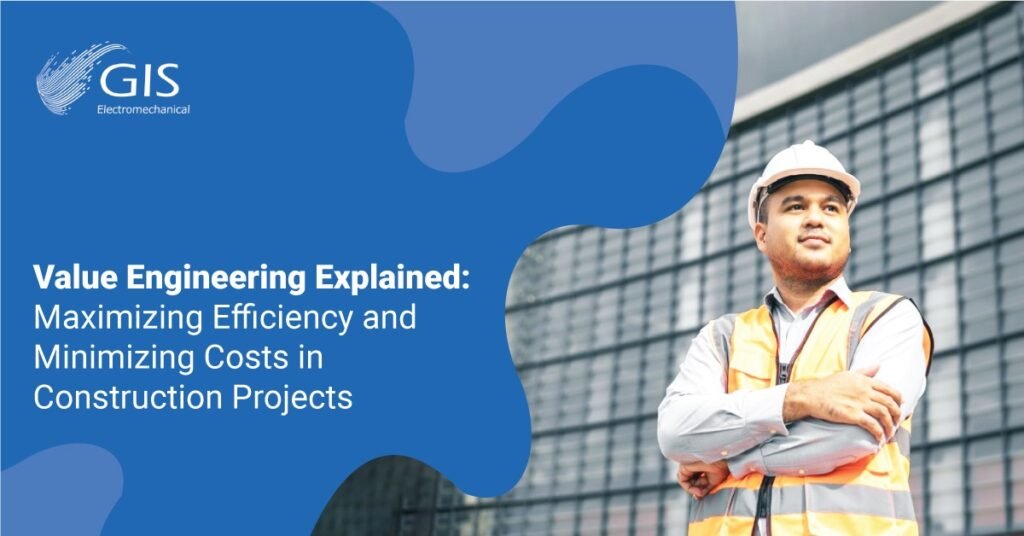Sustainable Construction Practices: Building for the Future with Eco-Friendly Solutions and Technologies

In the modern world, sustainable construction practices have become the cornerstone of responsible building and design. As the construction industry evolves to meet the demands of a more environmentally conscious society, it’s imperative to adopt and integrate eco-friendly solutions and technologies into every aspect of the building process. In this comprehensive article, we explore various facets of sustainable construction, including innovative materials, energy-efficient designs, and cutting-edge technologies that contribute to the creation of greener and healthier living and working spaces. Eco-Friendly Building Materials The foundation of sustainable construction begins with the selection of eco-friendly building materials. Traditional materials such as concrete and steel have significant environmental footprints due to their energy-intensive production processes. However, modern innovations have led to the development of alternative materials that are both sustainable and efficient. Some notable options include: Recycled steel: This material reduces the need for raw steel production and has a lower carbon footprint. Bamboo: Known for its rapid growth and strength, bamboo is an excellent alternative to wood for structural elements and flooring. Cross-laminated timber (CLT): A strong and lightweight wood product that can replace steel and concrete in certain applications. Recycled plastics: Used in products such as bricks and composite lumber, recycled plastics help divert waste from landfills. Hempcrete: A mixture of hemp and lime, this sustainable material provides insulation and carbon sequestration benefits. By incorporating these materials, construction projects can significantly reduce their environmental impact while maintaining quality and durability. Energy-Efficient Design and Construction Energy efficiency is a central aspect of sustainable construction. By focusing on energy-efficient design and construction methods, we can create buildings that consume less energy and reduce greenhouse gas emissions. Key strategies include: Passive solar design: Utilizing the sun’s energy to naturally heat and light spaces, passive solar design incorporates features such as south-facing windows, thermal mass, and shading elements. Insulation and air sealing: Proper insulation and air sealing can greatly improve a building’s energy efficiency, reducing heating and cooling costs. High-performance windows: Advanced glazing technologies and window frames improve thermal performance and enhance natural light. Energy-efficient appliances: Choosing Energy Star-rated appliances can help lower energy consumption in both residential and commercial buildings. Geothermal heating and cooling: By harnessing the Earth’s natural heat, geothermal systems provide a cost-effective and environmentally friendly solution for climate control. These energy-efficient approaches not only contribute to sustainability but also lead to long-term cost savings for building owners. Water Conservation Techniques Water scarcity is a pressing global issue, making water conservation a critical aspect of sustainable construction. By implementing water-saving measures in new buildings, we can help preserve this vital resource. Key strategies include: Low-flow fixtures: Faucets, showerheads, and toilets with low-flow options can significantly reduce water usage. Rainwater harvesting: Collecting and storing rainwater for non-potable uses such as irrigation and toilet flushing can decrease reliance on municipal water supplies. Greywater recycling: Recycling water from sinks, showers, and washing machines for irrigation and other purposes reduces fresh water consumption. Landscaping with native plants: Choosing native plants for landscaping minimizes water requirements and supports local ecosystems. These techniques not only contribute to sustainability but also help building owners save on water bills. Green Building Certifications and Standards Achieving green building certifications and adhering to recognized standards is an effective way to ensure that a construction project meets high sustainability criteria. Some notable certifications and standards include: LEED (Leadership in Energy and Environmental Design): LEED certification assesses a building’s overall sustainability, including energy efficiency, water conservation, and indoor air quality. BREEAM (Building Research Establishment Environmental Assessment Method): BREEAM focuses on various sustainability aspects, such as energy use, waste management, and ecological impact. WELL Building Standard: This standard emphasizes the health and well-being of building occupants through air and water quality, natural light, and other factors. Living Building Challenge: The most rigorous green building certification, the Living Building Challenge, evaluates projects based on criteria such as energy, water, materials, and place. Pursuing these certifications demonstrates a commitment to sustainability and can enhance a building’s marketability. Innovative Sustainable Technologies The integration of innovative sustainable technologies is transforming the construction industry. These cutting-edge advancements enable more efficient and eco-friendly building practices. Key technologies include: Solar panels and photovoltaics: By harnessing solar energy to generate electricity, solar panels can be installed on rooftops or integrated into building materials. Smart home systems: Automated systems for lighting, heating, and cooling allow for precise energy management and optimization. Green roofs: Green roofs provide insulation, stormwater management, and biodiversity benefits by incorporating vegetation on building tops. 3D printing: This technology allows for the creation of building components with minimal waste and can utilize recycled materials. Advanced insulation materials: Aerogels and other advanced insulation materials offer superior thermal performance with lower environmental impact. These technologies not only enhance sustainability but also contribute to the longevity and resilience of buildings. Incorporating sustainable construction practices is essential for building a better future. By focusing on eco-friendly solutions and technologies, we can create spaces that are not only environmentally responsible but also healthier and more cost-effective for occupants. As the industry continues to evolve, adopting these practices will be critical to ensuring a sustainable built environment for generations to come.
Project Management Essentials: Strategies for Successful Execution of Industrial Projects

In the realm of industrial projects, meticulous planning, coordination, and execution are essential for ensuring successful outcomes. Project management plays a vital role in navigating the complexities of these large-scale endeavors. In this comprehensive guide, we explore strategies and best practices for managing industrial projects effectively, from initiation to closure. 1. Understanding Industrial Project Management Industrial project management involves overseeing large-scale projects across various sectors, such as manufacturing, construction, energy, and infrastructure. These projects often require the collaboration of multidisciplinary teams, sophisticated technology, and adherence to strict regulations. Effective management ensures that projects are completed on time, within budget, and according to quality standards. 2. Project Planning and Initiation A strong foundation for industrial projects starts with thorough planning and initiation: Define clear Objectives: Establish precise project goals that align with organizational strategies. Develop a Detailed Scope: Outline project deliverables, boundaries, and constraints to avoid scope creep. Create a Project Charter: Document essential project information, including key stakeholders, objectives, and resources. Conduct Feasibility Studies: Assess project viability, potential risks, and alternative solutions. 3. Building a Capable Project Team An effective project team is crucial for successful execution: Assemble a Multidisciplinary Team: Include experts from various fields to cover all project aspects. Define Roles and Responsibilities: Ensure each team member understands their tasks and expectations. Foster Communication: Encourage open, honest, and regular communication among team members. 4. Risk Management and Mitigation Identifying and addressing risks is crucial for industrial projects: Risk Identification: Conduct a comprehensive risk assessment to identify potential issues. Risk Analysis: Evaluate the impact and likelihood of risks occurring. Risk Mitigation: Develop strategies to minimize or eliminate risks. Monitor and Review: Continuously monitor risks and adjust plans as needed. 5. Resource Allocation and Budget Management Optimal resource allocation and budget management are key components of project success: Plan Resource Needs: Determine the necessary workforce, materials, and equipment for the project. Optimize Resource Utilization: Ensure efficient use of available resources to avoid waste. Monitor Budget: Track expenses and compare them with projected costs to prevent cost overruns. Adjust Budgeting as Needed: Make necessary adjustments to budget allocations based on project progress. 6. Scheduling and Time Management Effective scheduling and time management ensure projects stay on track: Develop a Project Timeline: Create a detailed project schedule outlining key milestones and deadlines. Use Project Management Software: Leverage tools to manage schedules, tasks, and dependencies. Monitor Progress: Track project progress and adjust schedules as needed. Implement Time-Tracking: Monitor the time spent on tasks to improve productivity. 7. Quality Control and Assurance Maintaining high-quality standards is essential for industrial projects: Establish Quality Standards: Define quality metrics and performance criteria for the project. Implement Quality Control Processes: Monitor work quality at every stage to identify and address issues. Conduct Inspections and Audits: Perform regular assessments to ensure compliance with quality standards. Document Quality Assurance: Maintain records of quality control measures and results. 8. Stakeholder Engagement and Communication Effective stakeholder engagement fosters project support and collaboration: Identify Key Stakeholders: Determine who will be impacted by the project and their level of influence. Develop a Communication Plan: Establish regular updates and reporting for stakeholders. Foster Transparency: Keep stakeholders informed about project progress, challenges, and successes. Address Concerns Promptly: Respond to stakeholder feedback and concerns promptly. 9. Change Management Navigating change effectively ensures projects stay on course: Establish Change Control Procedures: Define processes for managing scope changes and variations. Assess Impact of Changes: Evaluate how proposed changes will affect project objectives and timelines. Communicate Changes: Keep team members and stakeholders informed about changes and their implications. Document Changes: Maintain records of all project changes for future reference. 10. Performance Monitoring and Evaluation Regular monitoring and evaluation guide project success: Track Key Performance Indicators (KPIs): Monitor KPIs to assess project performance. Conduct Performance Reviews: Evaluate team and individual performance against goals. Implement Corrective Actions: Take action to address underperformance or deviations from plans. Perform Post-Project Reviews: Evaluate overall project success and identify lessons learned. Managing industrial projects requires a comprehensive approach that encompasses planning, execution, monitoring, and control. By implementing these essential strategies, project managers can navigate the complexities of industrial projects and achieve successful outcomes. Effective project management not only ensures the timely and cost-effective completion of projects but also contributes to the long-term success of organizations.
Water Filtration Systems: Enhancing Water Quality and Safety in Industrial Environments

In industrial environments, the quality and safety of water play a crucial role in the efficient and safe operation of various processes. Water filtration systems are instrumental in ensuring that the water used in these environments meets the necessary standards for industrial use and compliance with regulatory requirements. In this article, we explore the importance of water filtration systems in industrial settings, their various types, and the benefits they provide in enhancing water quality and safety. Importance of Water Filtration in Industrial Settings Industries rely on water for a wide range of applications, including cooling, processing, and cleaning. The presence of impurities, contaminants, or other harmful substances in the water can have serious consequences, such as equipment damage, decreased efficiency, and potential health risks for employees. Effective water filtration helps to eliminate these issues by: Removing Contaminants: Filtration systems can remove suspended solids, organic and inorganic contaminants, and other impurities from the water. Ensuring Compliance: Industrial water must meet specific standards and regulations to ensure safety and quality, which can be achieved through proper filtration. Protecting Equipment: Clean water minimizes wear and tear on equipment, reducing maintenance costs and increasing the lifespan of machinery. Improving Efficiency: Filtration helps maintain optimal process conditions, improving productivity and reducing downtime. Enhancing Safety: Clean water ensures the safety of employees and any products that come into contact with the water. Types of Water Filtration Systems Industrial environments require different types of water filtration systems, depending on their specific needs. Here are some common types of filtration systems used in industrial settings: Sediment Filtration: This type of filtration system removes larger particles, such as sand, silt, and other suspended solids from the water. It is typically the first stage of filtration in an industrial process. Activated Carbon Filtration: Activated carbon filters use adsorption to remove organic compounds, chlorine, and other chemicals from the water. They are effective in improving taste and odor as well. Reverse Osmosis (RO): RO systems use a semi-permeable membrane to remove dissolved solids, such as salts and minerals, from the water. This process is highly effective in producing high-purity water for industrial applications. Ultrafiltration: Ultrafiltration systems use a membrane with fine pores to remove bacteria, viruses, and other microorganisms from the water. This method is suitable for producing safe drinking water. Deionization: Deionization systems remove ions from water, resulting in demineralized or deionized water. This is important for processes that require ultra-pure water, such as electronics manufacturing. Benefits of Implementing Water Filtration Systems Implementing water filtration systems in industrial environments provides numerous benefits that contribute to overall efficiency and safety: Enhanced Water Quality: Filtration systems improve the quality of water, making it suitable for various industrial applications. Cost Savings: By protecting equipment and reducing maintenance costs, filtration systems lead to cost savings over time. Regulatory Compliance: Properly filtered water ensures compliance with local, national, and international water quality standards. Improved Process Efficiency: Clean water helps maintain optimal process conditions, leading to improved efficiency and productivity. Health and Safety: By providing safe water for industrial use, filtration systems protect employees and any products that come into contact with the water. Choosing the Right Water Filtration System Selecting the most appropriate water filtration system for an industrial environment requires careful consideration of several factors: Water Source: The source of the water and its quality should guide the choice of filtration system. Contaminant Profile: Understanding the types of contaminants present in the water helps in selecting the right filtration technology. Flow Rate: The required flow rate and capacity of the system should match the needs of the industrial process. Maintenance Requirements: Consider the ease of maintenance and availability of replacement parts for the chosen system. Budget: The cost of the system, including installation, operation, and maintenance, should align with the available budget. Water filtration systems play a vital role in maintaining water quality and safety in industrial environments. By removing contaminants and ensuring compliance with water quality standards, these systems contribute to efficient and safe industrial processes. Choosing the right filtration system is essential for achieving the desired water quality and maintaining the optimal performance of industrial equipment.
Harnessing Solar Energy: Understanding the Benefits and Applications for Industrial and Commercial Facilities

As the world progresses towards a sustainable future, the use of renewable energy sources, such as solar energy, has become paramount. Solar energy is one of the most accessible and abundant forms of renewable energy, making it a prime choice for industrial and commercial facilities. This article delves into the myriad benefits and applications of solar energy in these settings, exploring how businesses can harness the sun’s power to enhance efficiency and reduce costs. The Advantages of Solar Energy Cost Savings: Solar energy significantly reduces electricity bills for industrial and commercial facilities. By generating their own power, businesses can avoid peak electricity rates and potentially eliminate their reliance on the grid. Environmental Sustainability: Utilizing solar energy reduces the carbon footprint of facilities, aligning them with global efforts to combat climate change. Solar power produces no emissions, making it an eco-friendly alternative to fossil fuels. Energy Independence: Solar installations offer a degree of energy autonomy, allowing facilities to operate even during grid outages. This is especially important for critical infrastructure and operations. Low Maintenance: Solar panels require minimal maintenance, making them a long-term investment with high returns. Once installed, they can operate efficiently for decades. Tax Incentives and Rebates: Many governments offer incentives to encourage solar adoption, such as tax credits, rebates, and grants, which can further reduce the upfront cost of installation. Enhanced Corporate Image: Embracing solar energy showcases a company’s commitment to sustainability, potentially attracting environmentally conscious clients and investors. Applications of Solar Energy in Industrial and Commercial Settings On-Site Power Generation: Installing solar panels on rooftops or surrounding land allows facilities to generate their own electricity, reducing utility costs and increasing energy reliability. Solar Thermal Systems: These systems capture sunlight to heat water or air for industrial processes or space heating. This can lead to significant energy savings in operations such as manufacturing. Solar Lighting: Solar-powered lighting systems offer energy-efficient solutions for outdoor and indoor lighting. This includes streetlights, parking lot lights, and signage. Solar Charging Stations: For businesses with electric vehicle fleets or for customer use, solar charging stations provide a sustainable way to power vehicles, reducing reliance on the grid. Agricultural Applications: In agricultural settings, solar energy can power irrigation systems, greenhouse operations, and other farm machinery, contributing to increased productivity and sustainability. Remote Power Supply: For facilities in remote locations without easy access to the grid, solar power provides a viable and often more cost-effective alternative for electricity generation. Steps for Implementing Solar Energy in Facilities Assess Energy Needs: Evaluate the energy consumption patterns of the facility to determine the appropriate size and type of solar system required. Site Survey and Design: Conduct a site survey to identify the best locations for solar panel installation, considering factors such as sunlight exposure and space availability. Choose the Right Technology: Select solar technology based on the facility’s needs, such as photovoltaic (PV) panels for electricity generation or solar thermal systems for heating. Secure Permits and Incentives: Obtain the necessary permits and approvals for installation, and take advantage of any available financial incentives. Installation: Hire a qualified solar installation contractor to ensure a safe and efficient setup. Monitoring and Maintenance: Regularly monitor the solar system’s performance and conduct routine maintenance to maximize efficiency and longevity. Harnessing solar energy offers industrial and commercial facilities numerous benefits, from cost savings and energy independence to enhanced corporate image and environmental sustainability. By carefully evaluating their energy needs and implementing the appropriate solar solutions, businesses can take a significant step towards a greener and more efficient future.
Value Engineering Explained: Maximizing Efficiency and Minimizing Costs in Construction Projects

Value engineering is a strategic, systematic approach designed to maximize the efficiency and minimize the costs of construction projects. This methodology involves the thorough analysis of project components, focusing on delivering the best value while retaining the essential functions and qualities of the project. Here, we delve into the details of how value engineering can significantly impact the construction industry by achieving cost savings without compromising quality. The Principles of Value Engineering At the core of value engineering lies the goal of finding the most cost-effective ways to achieve the desired functions of a project. This approach is anchored in three primary principles: Function Orientation: The primary focus of value engineering is on the function of the project. Understanding the key functions helps in identifying where cost reductions can be made without affecting performance. Creative Thinking: A team-based approach encourages collaboration and brainstorming. Multiple perspectives can uncover innovative solutions to reduce costs while enhancing value. Systematic Approach: Following a structured methodology ensures thorough analysis and evaluation, ensuring every aspect of the project is examined for potential improvements. The Value Engineering Process The value engineering process is a systematic approach encompassing several key stages to optimize project efficiency: Information Gathering: This initial stage involves understanding the project goals, objectives, and constraints. Thorough knowledge of the project sets the stage for effective analysis. Function Analysis: Identifying the key functions and objectives of the project helps in prioritizing aspects that must be maintained while considering cost reductions. Creative Phase: A brainstorming session among team members generates ideas for potential improvements. Innovative solutions are identified and recorded. Evaluation: All proposed ideas are carefully evaluated based on feasibility, cost savings, and impact on project quality. The most promising options are shortlisted. Development: The shortlisted options are further developed, considering detailed feasibility, costs, and benefits. Proposals are fine-tuned for implementation. Presentation: The final proposals are presented to the stakeholders for approval and integration into the project. Benefits of Value Engineering Value engineering offers numerous benefits for construction projects, including: Cost Savings: By identifying more cost-effective alternatives, overall project costs can be reduced without sacrificing quality. Improved Efficiency: Streamlining processes and finding innovative solutions can lead to more efficient construction methods. Enhanced Quality: The focus on function ensures that essential project objectives are met while finding ways to improve quality. Better Collaboration: Value engineering involves teamwork and collaboration, leading to a more cohesive approach to project management. Risk Mitigation: Thorough analysis and evaluation help identify potential risks and develop strategies to mitigate them. Challenges and Solutions in Value Engineering While value engineering can significantly benefit construction projects, it is not without challenges. Some of the common obstacles include: Resistance to Change: Project teams may resist changes proposed by value engineering, especially if they are comfortable with existing methods. Time Constraints: Conducting a thorough value engineering process can be time-consuming, which may impact project timelines. Stakeholder Buy-In: Gaining approval from stakeholders for proposed changes can be challenging, especially if they involve significant deviations from the original plan. Solutions to these challenges include: Education and Communication: Informing the project team and stakeholders about the benefits of value engineering can help overcome resistance to change. Integrating VE early: Starting the value engineering process early in the project can help prevent delays and allow for smoother integration of proposed changes. Clear Presentation of Benefits: Presenting clear, quantifiable benefits of proposed changes can help in gaining stakeholder buy-in. Best Practices for Implementing Value Engineering To successfully implement value engineering in construction projects, consider the following best practices: Engage Experienced Professionals: Having a team of skilled professionals with experience in value engineering can lead to more effective analysis and solutions. Involve Stakeholders: Early and ongoing engagement with stakeholders ensures their input is considered and helps in gaining their support for proposed changes. Monitor and Adjust: Continuously monitor the implementation of proposed changes and adjust as necessary to achieve desired outcomes. Document the Process: Keeping detailed records of the value engineering process can provide valuable insights for future projects. Evaluate Results: Assess the outcomes of value engineering implementation to learn lessons and improve future projects. Value engineering is a powerful tool for maximizing efficiency and minimizing costs in construction projects. By focusing on key functions and using creative, systematic methods, project teams can uncover cost-saving opportunities while maintaining or enhancing quality. With the right approach, value engineering can lead to better collaboration, risk mitigation, and overall project success.
The Importance of Regular HVAC Maintenance: Tips for Optimal Performance

When it comes to maintaining comfort and air quality in our homes and businesses, HVAC (heating, ventilation, and air conditioning) systems play an integral role. Keeping these systems running efficiently requires regular maintenance. Routine upkeep not only ensures optimal performance but can also extend the life of your system and lead to cost savings over time. In this article, we will discuss the significance of regular HVAC maintenance and provide tips to help you keep your system in top shape. Benefits of Regular HVAC Maintenance Improved Energy Efficiency: Properly maintained HVAC systems operate more efficiently, leading to reduced energy consumption. This results in lower utility bills and a smaller carbon footprint. Extended Lifespan: Just like any other mechanical equipment, an HVAC system benefits from regular care and attention. A well-maintained system is less likely to break down, prolonging its life and saving you money on costly repairs or replacements. Enhanced Indoor Air Quality: Regular maintenance includes cleaning or replacing filters, which helps keep your indoor air clean and healthy. This is especially important for individuals with allergies or respiratory issues. Lower Repair Costs: Catching small issues early during maintenance can prevent them from escalating into major problems. This saves you from expensive repairs down the line. Consistent Comfort: An optimally performing HVAC system ensures consistent heating and cooling throughout your space, keeping you comfortable year-round. Essential HVAC Maintenance Tasks Change Air Filters: One of the most important maintenance tasks is regularly changing your HVAC system’s air filters. Dirty filters can restrict airflow, causing the system to work harder and less efficiently. Replace filters every 1-3 months, depending on your usage and the type of filter. Clean Coils and Fins: The evaporator and condenser coils can accumulate dirt and debris over time, reducing their efficiency. Clean these coils and fins regularly to maintain proper heat exchange. Check and Clean Ducts: Dirty or blocked ducts can hinder airflow and impact your system’s efficiency. Have your ducts inspected and cleaned by a professional as needed. Inspect the Thermostat: Ensure your thermostat is working correctly and set to your preferred temperature. Consider upgrading to a programmable thermostat for more precise control and energy savings. Lubricate Moving Parts: Proper lubrication of moving parts, such as fans and motors, helps reduce friction and wear. This can improve the system’s performance and extend its lifespan. Tighten Electrical Connections: Loose electrical connections can lead to system malfunctions and pose safety risks. A professional technician should inspect and tighten connections as part of regular maintenance. Check the Condensate Drain: A clogged condensate drain can cause water damage and affect your system’s performance. Regularly check and clear the drain to ensure proper functioning. Monitor Refrigerant Levels: Low refrigerant levels can reduce cooling efficiency and put extra strain on the system. Have a technician check and recharge refrigerant levels if necessary. Professional HVAC Maintenance While there are some maintenance tasks you can perform yourself, others require the expertise of a professional HVAC technician. Annual or semi-annual maintenance checks by a qualified technician can provide a thorough inspection and identify potential issues before they become major problems. This proactive approach can save you money and ensure your system operates efficiently. What to Expect During a Professional HVAC Maintenance Visit System Inspection: A technician will inspect all components of your HVAC system, including the blower, fan, motor, and electrical connections. Cleaning and Adjustments: They will clean or replace parts as necessary, and make adjustments to optimize system performance. Safety Checks: Safety features such as gas connections, pilot light, and pressure levels will be assessed to ensure safe operation. Efficiency Testing: Technicians may perform efficiency tests to ensure your system is running at its optimal level. DIY HVAC Maintenance Tips For those who prefer a hands-on approach, there are several tasks you can perform yourself to keep your HVAC system in good condition: Regularly Change Air Filters: As mentioned, changing your air filters regularly can improve airflow and energy efficiency. Keep Outdoor Unit Clean: Make sure the outdoor condenser unit is clear of debris and vegetation. A clean unit performs more efficiently. Monitor Thermostat Settings: Set your thermostat to energy-saving settings when possible. Using a programmable thermostat can help you achieve this. Inspect and Clean Vents: Check your home’s vents to ensure they are clean and unobstructed. Blocked vents can strain your HVAC system. Regular HVAC maintenance is crucial for optimal performance and longevity of your system. By taking the time to perform essential tasks and scheduling professional inspections, you can enjoy consistent comfort, improved energy efficiency, and lower repair costs. Keeping your HVAC system in top condition not only enhances your indoor air quality but also contributes to a sustainable and cost-effective lifestyle.
